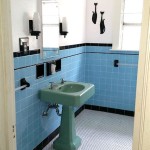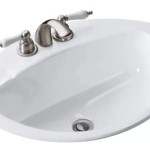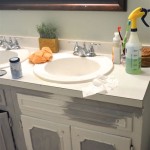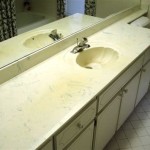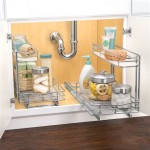Moen Bathroom Faucets Leaking: How to Diagnose and Fix Common Issues
Moen bathroom faucets are a popular choice for homeowners due to their durability, stylish designs, and reliable performance. However, like all plumbing fixtures, Moen faucets can develop leaks over time. These leaks can range from a minor drip to a more significant flow of water, potentially leading to water wastage, increased water bills, and even damage to bathroom surfaces. Identifying the source of the leak and implementing the appropriate repair is crucial to resolving the issue and preventing further problems.
This article provides a comprehensive guide to diagnosing and fixing common causes of leaks in Moen bathroom faucets. It outlines the necessary tools, detailed troubleshooting steps, and practical repair solutions to help homeowners address these issues effectively. Understanding the internal components of a Moen faucet and how they function is essential for accurate diagnosis and successful repair.
Understanding Moen Faucet Construction
Moen faucets, while varying in style and design, generally share a similar internal construction. This construction typically includes the faucet handle, the faucet body, the cartridge (or valve), O-rings and seals, waterways, and the spout. Understanding the function of each component is key to pinpointing the source of a leak.
The handle controls the flow and temperature of the water. It is connected to the cartridge, which regulates the mixing of hot and cold water. The cartridge is a cylindrical component with internal passages that control the water flow. O-rings and seals are small rubber or silicone rings that create a watertight seal between various faucet components. These are often the first points of failure leading to leaks. Waterways are the internal channels within the faucet body through which water flows. The spout is the outlet from which water is dispensed.
Several common types of Moen faucets exist, each with its own specific cartridge design. Single-handle faucets are the most common, utilizing a single cartridge to control both water flow and temperature. Two-handle faucets typically have two separate cartridges, one for hot water and one for cold water. Widespread faucets feature separate hot and cold water handles mounted away from the spout. Knowing which type of Moen faucet is experiencing the leak is important for identifying the correct replacement parts and repair procedures.
Identifying the Source of the Leak
Before attempting any repairs, accurately identifying the source of the leak is essential. This involves a careful inspection of the faucet and surrounding area. Common leak locations in Moen bathroom faucets include:
- Around the Base of the Faucet: Leaks in this area often indicate a problem with the faucet's mounting hardware or the putty/caulk seal between the faucet base and the sink.
- Under the Sink: Leaks under the sink might originate from the supply lines connecting to the faucet, the drain assembly, or the faucet body itself.
- Around the Handle: Leaks around the handle frequently suggest a worn O-ring or a damaged cartridge.
- From the Spout: A constant drip from the spout usually points to a faulty cartridge or valve seat.
A methodical approach to leak detection is recommended. Start by drying the area around the faucet thoroughly. Then, run the water and carefully observe where the first signs of water appear. Use a flashlight to inspect hard-to-reach areas. Pay close attention to the connections between the faucet body, supply lines, and drain components. Feeling around the faucet with a dry cloth can help identify subtle leaks that are not immediately visible.
If the leak is under the sink, check the supply lines for any signs of corrosion, cracks, or loose connections. The drain assembly should also be inspected for leaks, especially at the slip joints. If water is dripping from the faucet spout even when the handle is in the off position, the cartridge is the most likely culprit. Leaks around the handle typically indicate a problem with the O-rings or the cartridge's seal.
Common Causes and Repair Procedures
Once the source of the leak has been identified, the appropriate repair procedure can be implemented. Here are some common leak causes and the steps to address them:
Leaking Around the Faucet Base
Leaks around the base of the faucet are usually caused by a compromised seal between the faucet and the sink. This seal is typically created using plumber's putty or caulk. Over time, this material can dry out, crack, or shrink, creating gaps that allow water to seep through.
Repair Procedure:
- Turn off the water supply to the faucet.
- Disconnect the water supply lines from the faucet tailpieces.
- Remove the faucet from the sink. This may involve loosening mounting nuts or screws located underneath the sink.
- Clean the sink surface and the bottom of the faucet base to remove any old putty or caulk.
- Apply a fresh bead of plumber's putty or caulk around the base of the faucet.
- Reinstall the faucet onto the sink, ensuring that the mounting hardware is properly tightened.
- Reconnect the water supply lines.
- Turn on the water supply and check for leaks.
Leaking Under the Sink
Leaks under the sink can originate from several sources, including the supply lines, drain assembly, or the faucet body itself.
Repair Procedure (Supply Lines):
- Turn off the water supply to the faucet.
- Inspect the supply lines for signs of corrosion, cracks, or loose connections.
- If the supply line is damaged, replace it with a new one. Ensure the new supply line is the correct size and length.
- If the connection is loose, tighten the compression nut or fitting. Be careful not to overtighten, as this can damage the fitting.
- Wrap Teflon tape around the threads of the fitting before tightening to create a better seal.
- Turn on the water supply and check for leaks.
Repair Procedure (Drain Assembly):
- Inspect the drain assembly for leaks, especially at the slip joints.
- Tighten any loose slip nuts. Be careful not to overtighten.
- If the leak persists, disassemble the drain assembly and inspect the washers and seals for damage.
- Replace any damaged washers or seals.
- Reassemble the drain assembly and tighten all connections.
- Run water into the sink and check for leaks.
Repair Procedure (Faucet Body):
If the leak is coming directly from the faucet body under the sink, the faucet itself may be damaged and require replacement. Examine the body for cracks and corrosion. If these are present, replacing the entire faucet is generally the most effective solution. Attempting to repair a cracked faucet body is often unreliable and can lead to further leaks.
Leaking Around the Handle
Leaks around the handle typically indicate worn or damaged O-rings on the cartridge or a failing cartridge itself. The O-rings provide a watertight seal between the cartridge and the faucet body.
Repair Procedure:
- Turn off the water supply to the faucet.
- Remove the faucet handle. This usually involves loosening a setscrew located on the side or front of the handle.
- Remove any decorative escutcheons or retaining clips that are holding the cartridge in place.
- Carefully remove the cartridge from the faucet body. You may need to use a cartridge puller tool to remove a stubborn cartridge.
- Inspect the O-rings on the cartridge for wear or damage.
- Replace the O-rings with new ones of the correct size. Apply silicone grease to the new O-rings before installation.
- If the O-rings appear to be in good condition, the cartridge itself may be faulty and should be replaced.
- Reinstall the cartridge into the faucet body, ensuring that it is properly seated.
- Reinstall the retaining clips or escutcheons and the faucet handle.
- Turn on the water supply and check for leaks.
Dripping from the Spout
A constant drip from the spout is often caused by a faulty cartridge or valve seat. Over time, the rubber or plastic components within the cartridge can wear out, allowing water to leak through even when the handle is in the off position.
Repair Procedure:
- Turn off the water supply to the faucet.
- Remove the faucet handle.
- Remove any decorative escutcheons or retaining clips that are holding the cartridge in place.
- Carefully remove the cartridge from the faucet body.
- Inspect the cartridge for any signs of wear or damage.
- Replace the cartridge with a new one of the correct type.
- Reinstall the cartridge into the faucet body, ensuring that it is properly seated.
- Reinstall the retaining clips or escutcheons and the faucet handle.
- Turn on the water supply and check for leaks.
In some cases, mineral buildup on the valve seat can also cause dripping. The valve seat is the surface against which the cartridge seals. Cleaning the valve seat with a mild abrasive, such as a paste of baking soda and water, can sometimes resolve this issue. However, if the valve seat is severely corroded or damaged, replacing the entire faucet may be necessary. Accessing and cleaning the valve seat often requires specialized tools and may not be feasible for all homeowners.

How To Repair Moen Bathroom Faucet Dripping Water Cartridge Removal Replace Single Lever

How To Replace Repair A Leaky Moen Cartridge In Bathroom Set Of Faucets Single Lever Tips

Easy Moen Bathroom Faucet Drip Repair

How To Fix A Leaky Moen Faucet Fast And Easy Cartridge Replacement

Moen Bathroom Faucet Repair 1225

How To Replace A Moen Cartridge And Fix Leaky Bathtub Faucet It Tutorials

How To Repair Remove Replace A Leaking Moen Shower Faucet Cartridge Valve With Single Knob 1225

How To Fix A Leaky Faucet The Home Depot

Moen Bathroom Faucet Repair 1225

How To Fix A Leaky Compression Faucet Home For Relax
Related Posts

